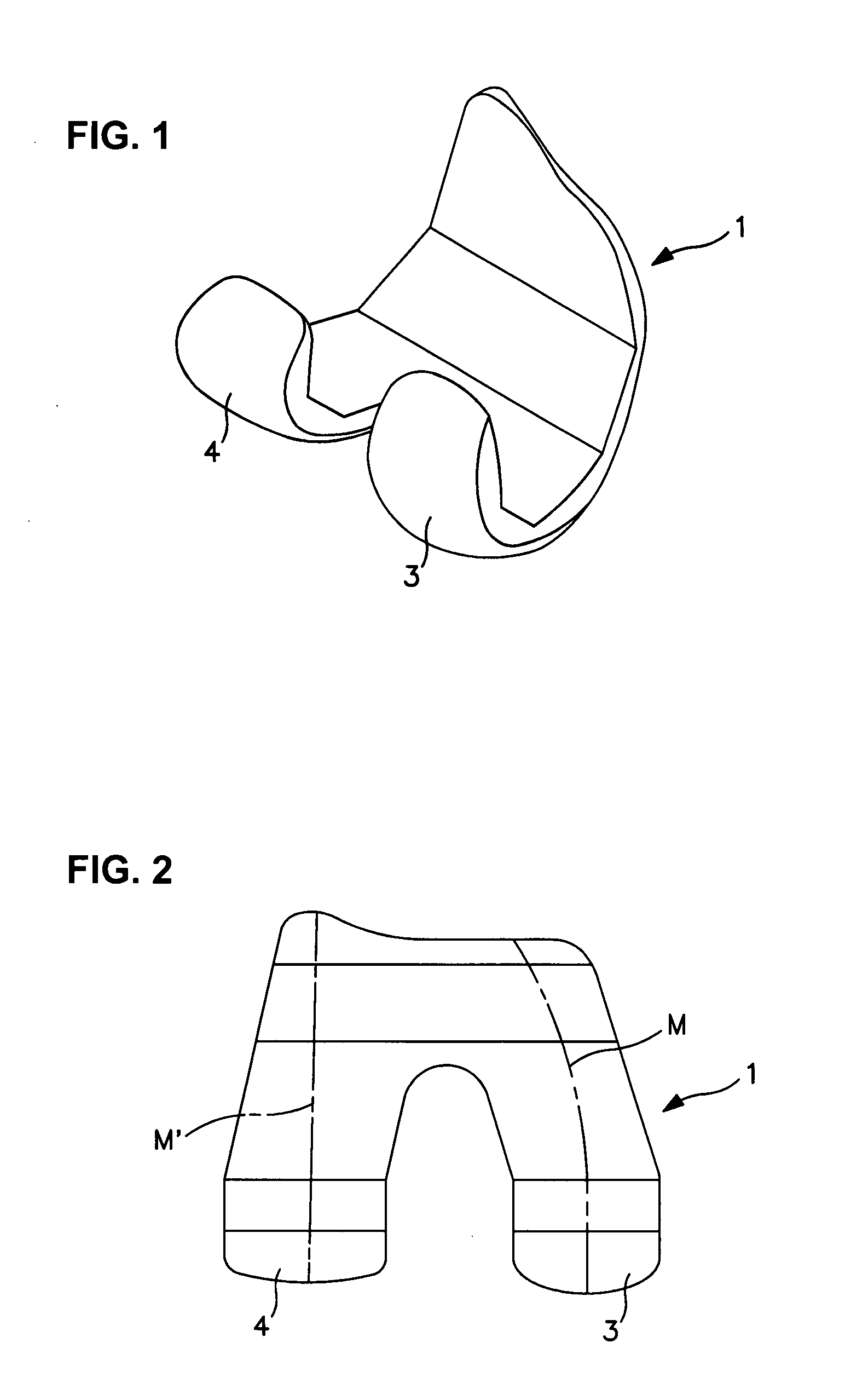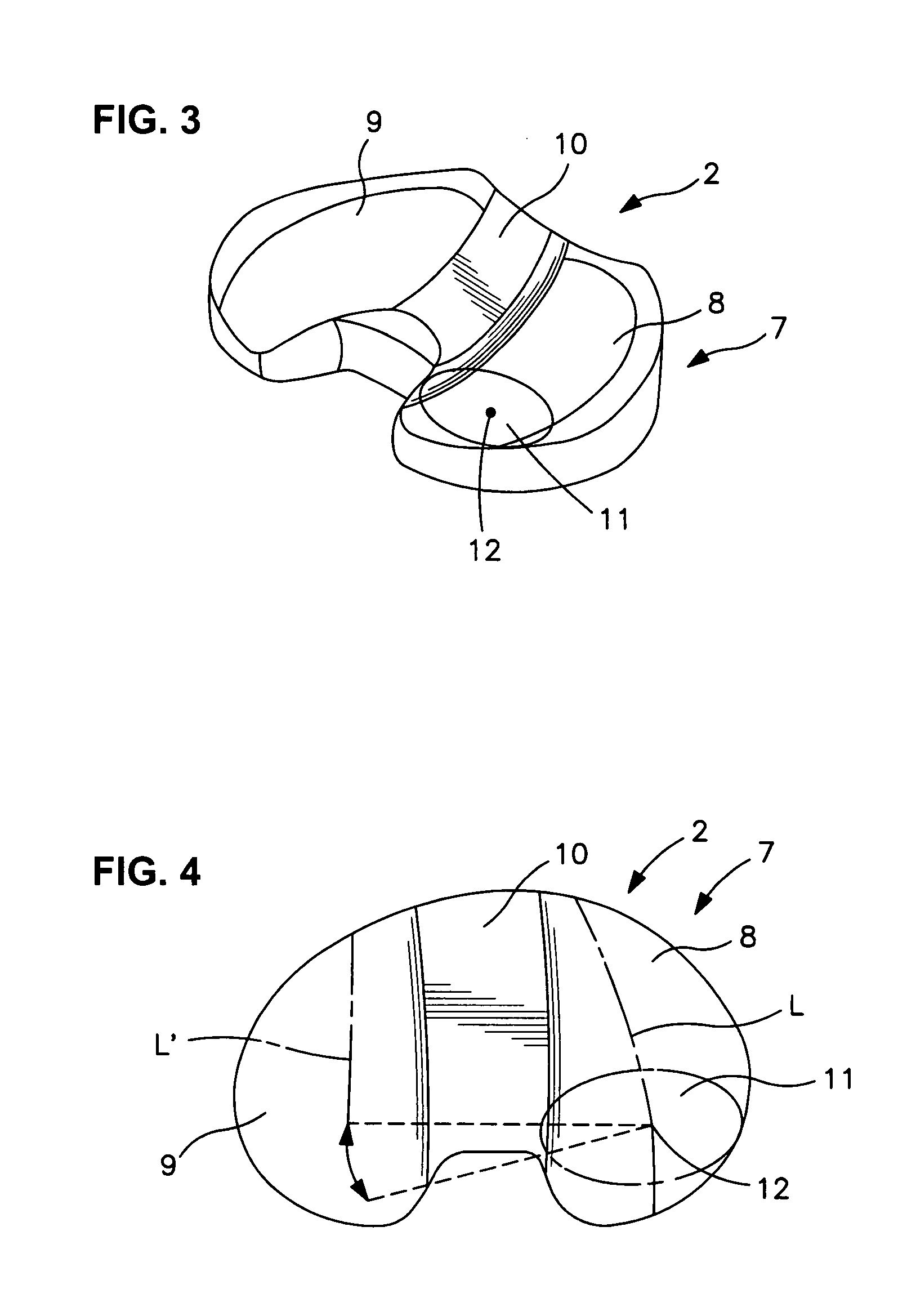Artificial knee joint
a knee joint and artificial technology, applied in knee joints, prostheses, medical science, etc., can solve the problems of inability to deep flex, inability to move as with biological knee joints, inability to abduct abduction-adduction motion, etc., to achieve smooth flexion-extension operation, easy to acquire balance, and smooth flexion-extension operation
- Summary
- Abstract
- Description
- Claims
- Application Information
AI Technical Summary
Benefits of technology
Problems solved by technology
Method used
Image
Examples
Embodiment Construction
[0028]Embodiments of the present invention will be described below with reference to the accompanying drawings.
[0029]The artificial knee joint comprises a combination of a femoral component 1 and a tibial component 2. Of these, the femoral component 1 is made from a biocompatible metal, such as titanium alloy, etc. An inlet shape is cut out from the center of the posterior part so that from the side view a medial condyle 3 and a lateral condyle 4 form a substantially round shape, that is, a substantially C shape with the medial condyle 3 thicker than the lateral condyle 4 over an entire region of an angle of flexion-extension as shown in FIG. 5. The femoral component 1 is attached to the distal end of femur 5. There is also a type that is called the PS (posterior stabilized) type where part of the cut-away part is covered by a box to restrict specific movement of the other member, but this is functionally the same. In this case, when the medial condyle 3 and lateral condyle 4 are vi...
PUM
 Login to View More
Login to View More Abstract
Description
Claims
Application Information
 Login to View More
Login to View More - R&D
- Intellectual Property
- Life Sciences
- Materials
- Tech Scout
- Unparalleled Data Quality
- Higher Quality Content
- 60% Fewer Hallucinations
Browse by: Latest US Patents, China's latest patents, Technical Efficacy Thesaurus, Application Domain, Technology Topic, Popular Technical Reports.
© 2025 PatSnap. All rights reserved.Legal|Privacy policy|Modern Slavery Act Transparency Statement|Sitemap|About US| Contact US: help@patsnap.com



